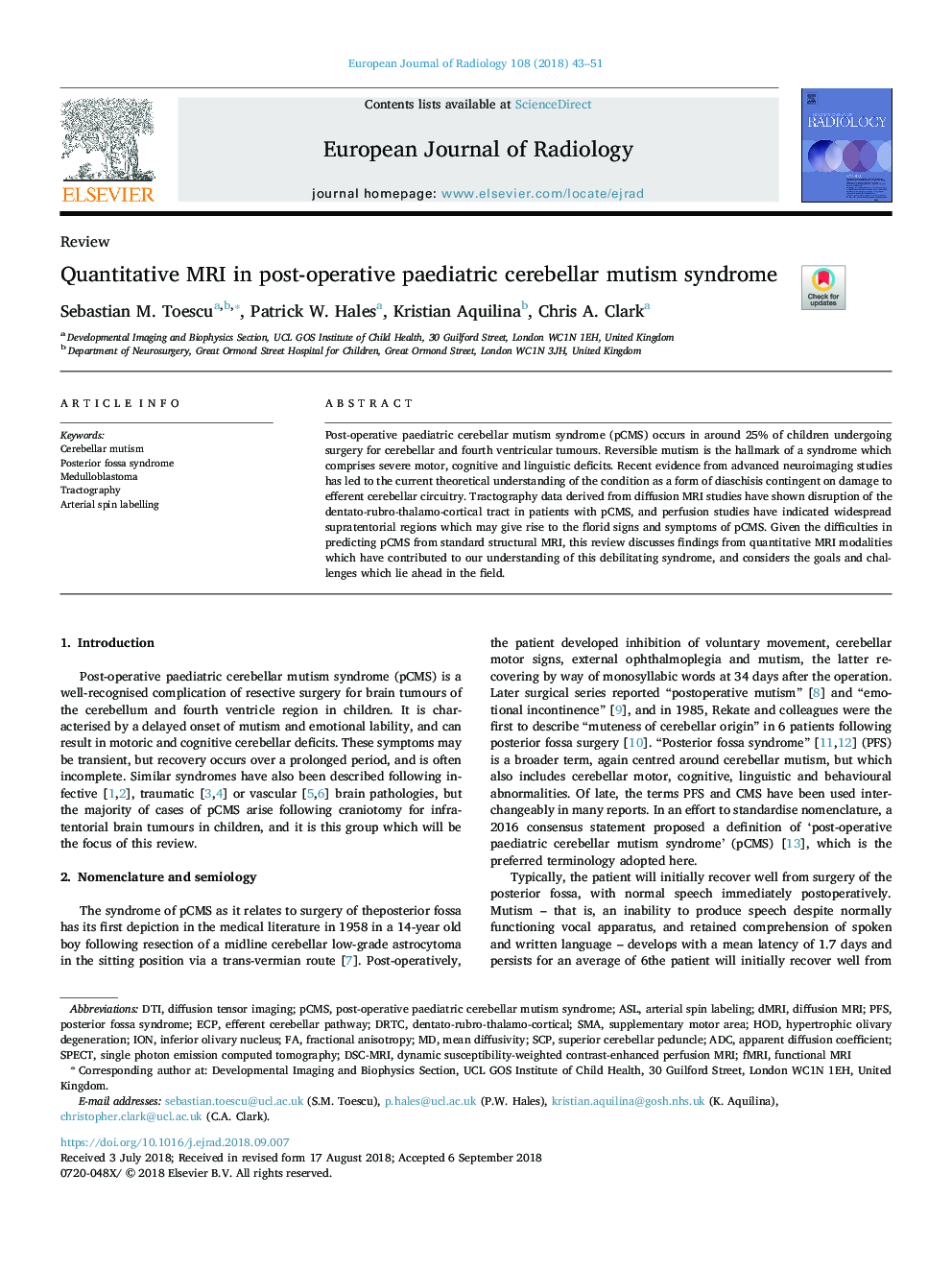| Article ID | Journal | Published Year | Pages | File Type |
|---|---|---|---|---|
| 10222530 | European Journal of Radiology | 2018 | 9 Pages |
Abstract
Post-operative paediatric cerebellar mutism syndrome (pCMS) occurs in around 25% of children undergoing surgery for cerebellar and fourth ventricular tumours. Reversible mutism is the hallmark of a syndrome which comprises severe motor, cognitive and linguistic deficits. Recent evidence from advanced neuroimaging studies has led to the current theoretical understanding of the condition as a form of diaschisis contingent on damage to efferent cerebellar circuitry. Tractography data derived from diffusion MRI studies have shown disruption of the dentato-rubro-thalamo-cortical tract in patients with pCMS, and perfusion studies have indicated widespread supratentorial regions which may give rise to the florid signs and symptoms of pCMS. Given the difficulties in predicting pCMS from standard structural MRI, this review discusses findings from quantitative MRI modalities which have contributed to our understanding of this debilitating syndrome, and considers the goals and challenges which lie ahead in the field.
Keywords
ASLADCPCMsECPSCPDSC-MRIHODDTIdMRIPFssuperior cerebellar peduncleFunctional MRISPECTArterial spin labellingTractographydiffusion tensor imagingfMRIDiffusion MRIsingle photon emission computed tomographySMAHypertrophic olivary degenerationPosterior fossa syndromeapparent diffusion coefficientarterial spin labelingmean diffusivityMedulloblastomasupplementary motor areacerebellar mutismfractional anisotropyinferior olivary nucleusIon
Related Topics
Health Sciences
Medicine and Dentistry
Radiology and Imaging
Authors
Sebastian M. Toescu, Patrick W. Hales, Kristian Aquilina, Chris A. Clark,
